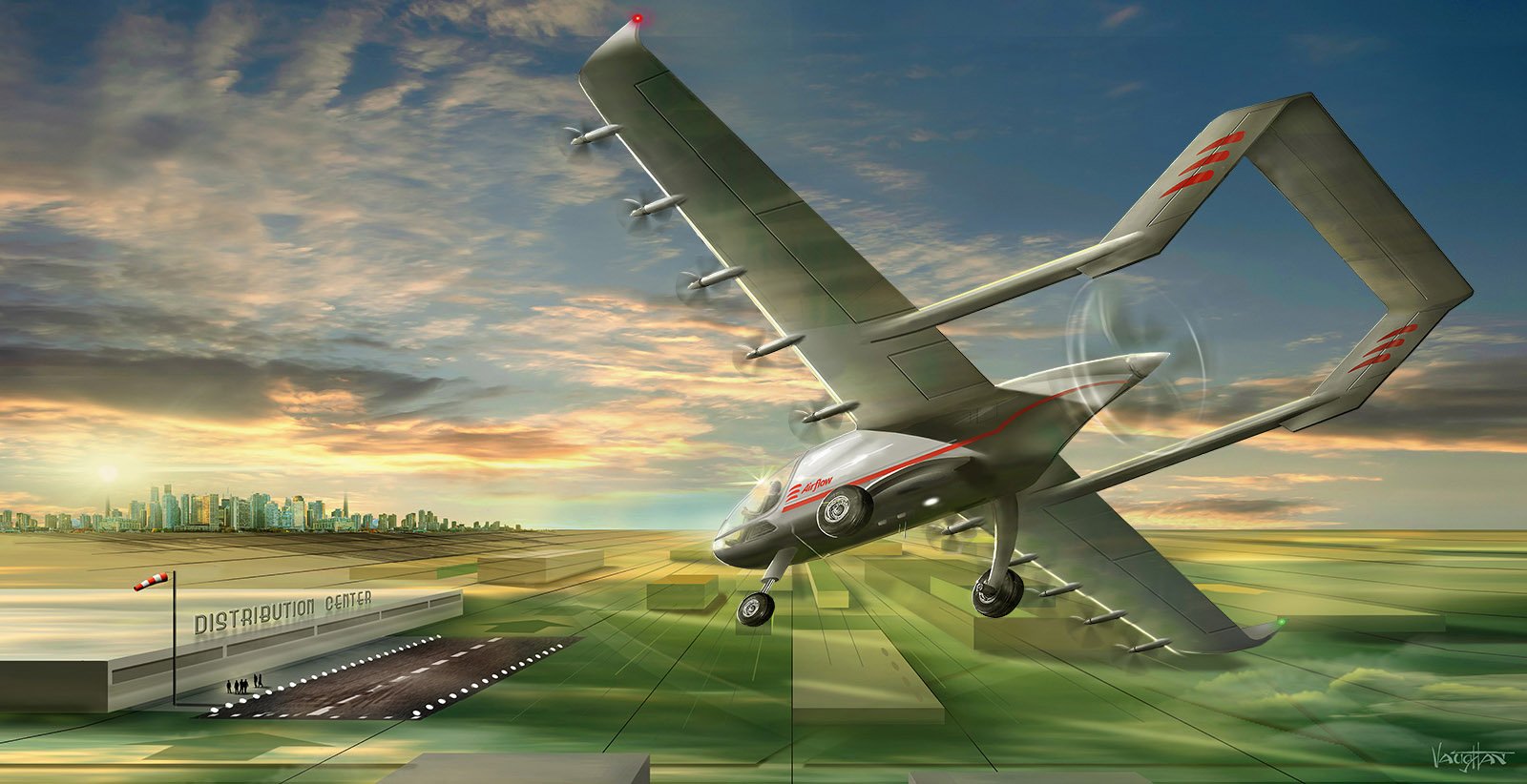Click Here to View This Page on Production Frontend
Click Here to Export Node Content
Click Here to View Printer-Friendly Version (Raw Backend)
Note: front-end display has links to styled print versions.
Content Node ID: 418651
Airflow, a startup launched by five former members of Airbus’s Vahana eVTOL aircraft development team, on June 10 announced plans to build an electric-powered short takeoff and landing aircraft (eSTOL) to be used for cargo operations. The California-based company said it can get the fixed-wing aircraft into production and certified under FAA Part 23 rules by 2025.
The unnamed aircraft is intended to be operated from short landing strips of just 300 feet in length. Airflow said it will actually only require around 150 feet for takeoff.
The company intends to develop what it calls an “aerial logistics network” for moving cargo between warehouses and distribution points with so-called “middle mile” trips of between around 50 and 250 miles, and at speeds of up to around 115 mph. It believes it can provide more efficient freight transportation than trucks.
Initially, Airflow's eSTOL is intended for single-pilot operations and will be able to carry a payload of 500 pounds in a 90-cu-ft cabin. Airflow claims that it will be operated at around one-third of the average hourly cost of a comparable helicopter or one of the new eVTOL aircraft now under development.
According to co-founder and CEO Marc Ausman, Airflow believes it will only need around $200 million for development and certification costs. It estimates that the equivalent amount needed for an eVTOL aircraft is around $700 million.
The design concept unveiled on June 10 shows 10 propellers on the leading edge of the wing and a single pusher propeller at the rear of the fuselage. Airflow is evaluating several different concepts with the final configuration to be reflected in a full-scale prototype that is expected to fly around mid-2023.
The company has already conducted some flight trials with a sub-scale model that it is using to test software developed for the aircraft’s distributed electric propulsion system and also its so-called “virtual tailhook” system to support pilots in making precision approaches to short runways. Around the middle of 2021, it expects to be ready to fly a full-scale experimental aircraft that will be used to further develop the propulsion system.
Initially, the eSTOL aircraft will have a hybrid-electric propulsion system consisting of electric motors, batteries, and a piston generator. Ausman told FutureFlight that the company chose to start with hybrid power because it wants it to be able to operate into locations that likely won’t have electric recharging capability, at least initially.
According to Airflow, the aircraft will be able to carry significantly fewer batteries and smaller motors than eVTOL aircraft because its power requirement for takeoff is around twice that needed for cruise flight, compared with five times. Ausman said that the purchase price will likely be comparable to that of a small turbine helicopter, which he claimed would be significantly less than the anticipated $3- to $5-million price tag for eVTOL aircraft.
Airflow says it is in discussion with several real estate groups and expects to make announcements for plans to develop landing facilities at cargo distribution locations, perhaps even building them on top of warehouses. Later this year, the company intends to announce plans to raise further investment to support the program.
The company’s business model envisages it securing contracts to provide air transportation to logistics groups and then subcontracting aircraft operations to Part 135 charter operators. It is developing an operating system that will track aircraft and their maintenance needs.
The aircraft is being developed for single-pilot operations and Airflow envisages this role being filled largely by younger pilots looking to build miles in their logbooks before moving up to airline jobs. Eventually, it could be operated autonomously but Ausman said that he feels it could take 15 years to get approval for this in some countries.
In the longer term, Airflow sees potential for the eSTOL to operate air taxi services. In addition to a single pilot, the aircraft could be adapted to carry two passengers.
